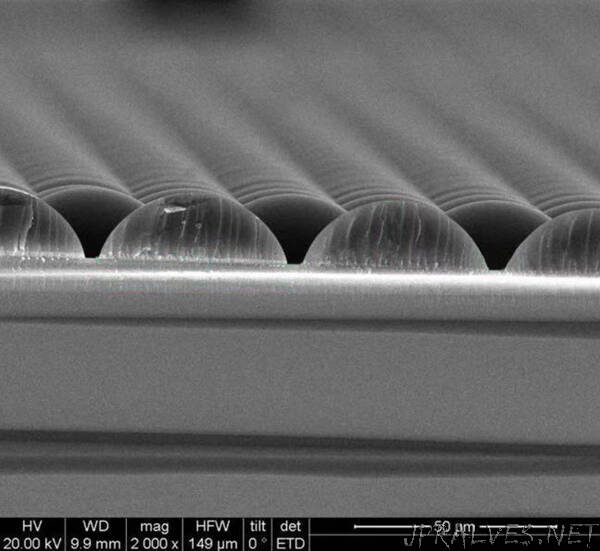
“Invisible infrared light accounts for half of all solar radiation on the Earth’s surface, yet ordinary solar energy systems have limited ability in converting it to power. A breakthrough in research at KTH could change that.
A research team led by Hans Ågren, professor in theoretical chemistry at KTH Royal Institute of Technology, has developed a film that can be applied on top of ordinary solar cells, which would enable them to use infrared light in energy conversion and increase efficiency by 10 percent or more.
“We have achieved a 10 percent increase in efficiency without yet optimizing the technology,” Ågren says. “With a little more work, we estimate that a 20 to 25 percent increase in efficiency could be achieved.”
Photosensitive materials used in solar cells, such as the mineral perovskite, have a limited ability to respond to infrared light. The solution, developed with KTH researchers Haichun Liu and Qingyun Liu, was to combine nanocrystals with chains of microlenses.
“The ability of the microlenses to concentrate light allows the nanoparticles to convert the weak IR light radiation to visibile light useful for solar cells,” Ågren says.
The research progress has been patented, and presented in the scientific journal Nanoscale.”
